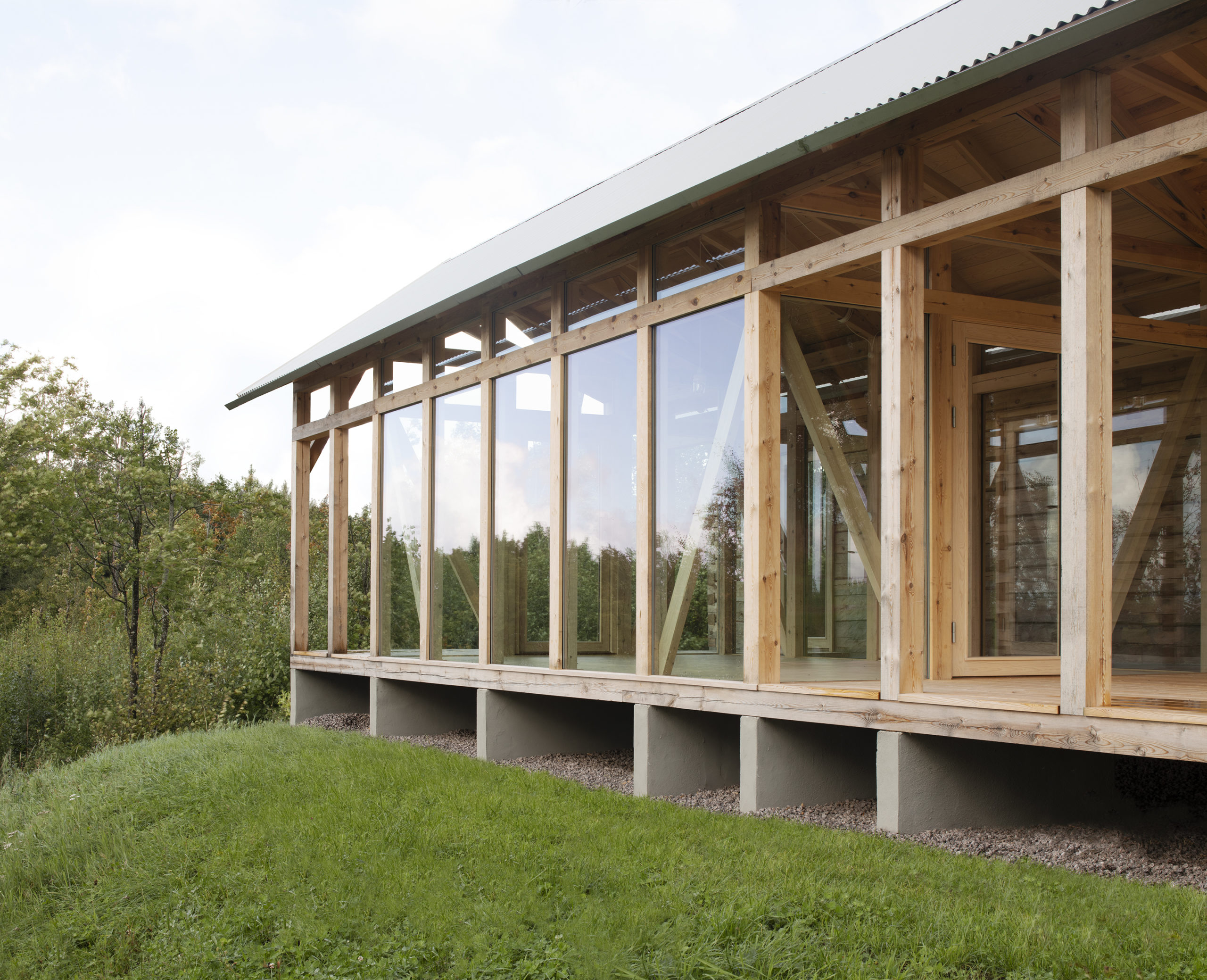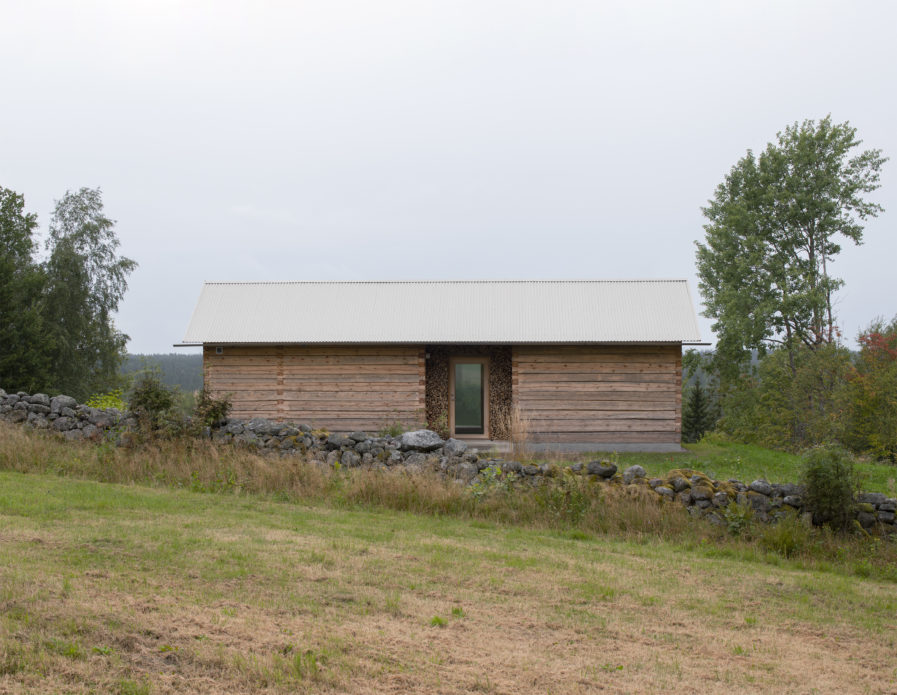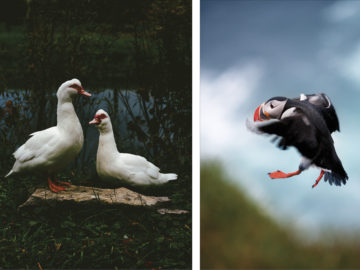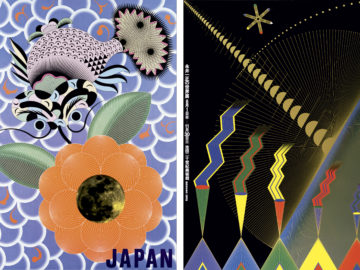Nestled atop a picturesque hill in the Skåne province of Sweden, two distinct timber cabins stand side by side, basking in their majestic beauty while overlooking an idyllic forest and glistening lake. An oasis of antiquity set amidst numerous older structures, these not-so-ordinary buildings create a stirring ambiance with their inspiring presence. Upon closer inspection, it becomes clear that the two structures are connected to make up a single house together.
Höjhult House is by Swedish architects Sofie Campanello and Catharina Dahl Palmér, principals of Gothenburg-based Fabel Arkitektur. The two are best known for their unique approach to architecture, combining modern lines and space usage concepts with wholly traditional construction methods. Höjhult is an example of how this principle is applied. The duo also wanted to keep their work “close to the earth.”
One cabin is almost entirely enclosed, made of horizontally stacked square-cut timber logs, and the other is almost entirely open. The enclosed cabin includes a kitchen, sauna, bath, shower, and bedroom. The open cabin is not altogether open, though it appears to be when viewed from a distance. It contains a peaked volume ceiling with floor-to-ceiling glass panes allowing a viewer to see straight through the house to the surrounding landscape. This space is earmarked as the living area and could perform numerous other functions. It also leads to a covered patio. Although the two buildings are made of the same materials, they appear as positive and negative versions of the same idea.






